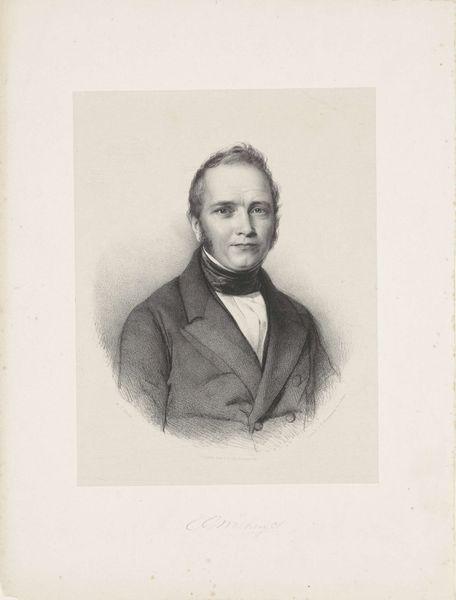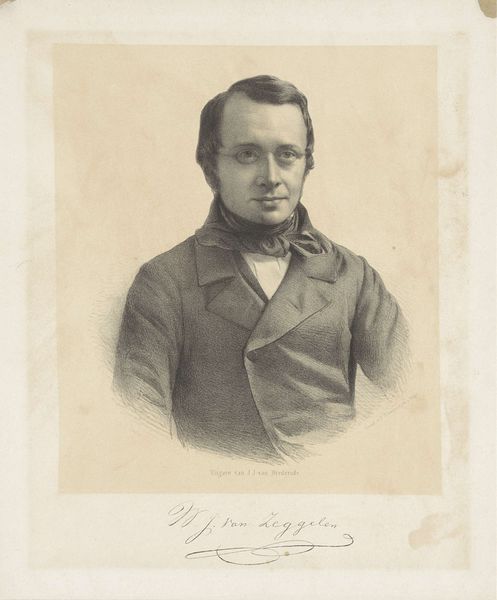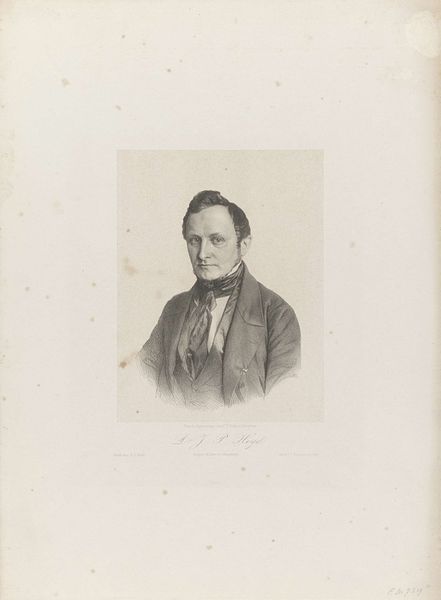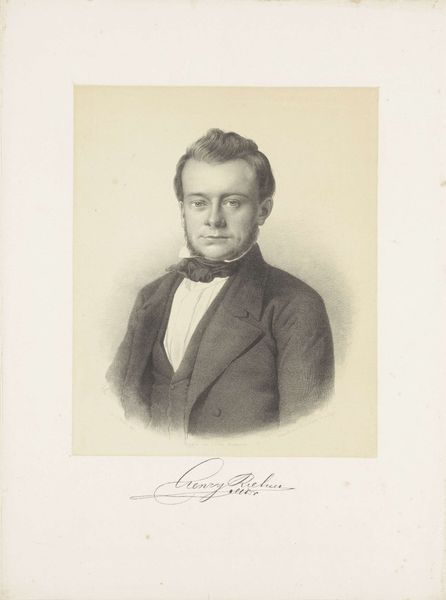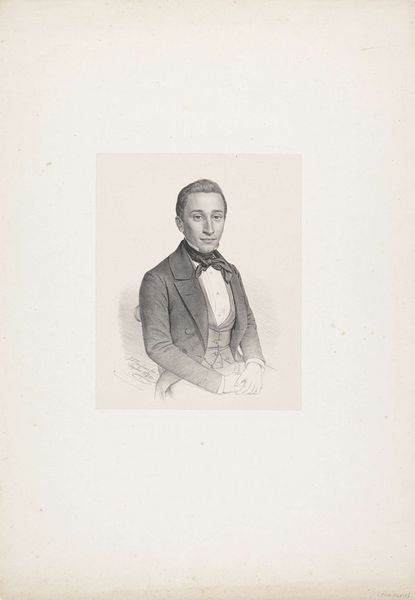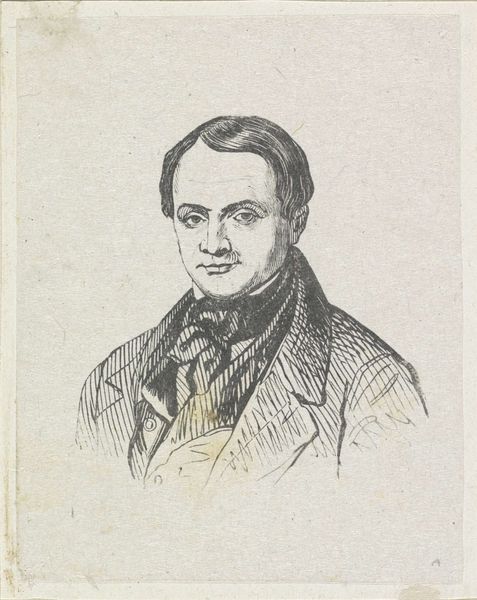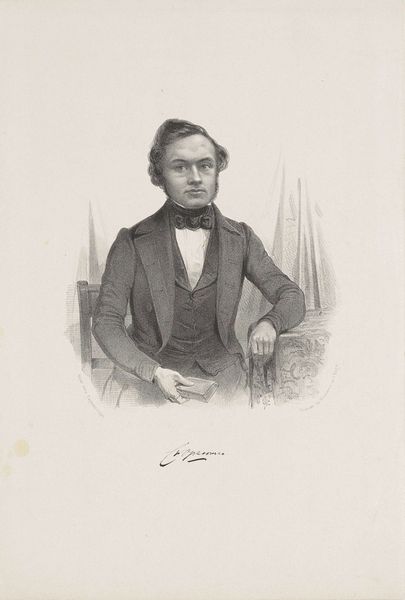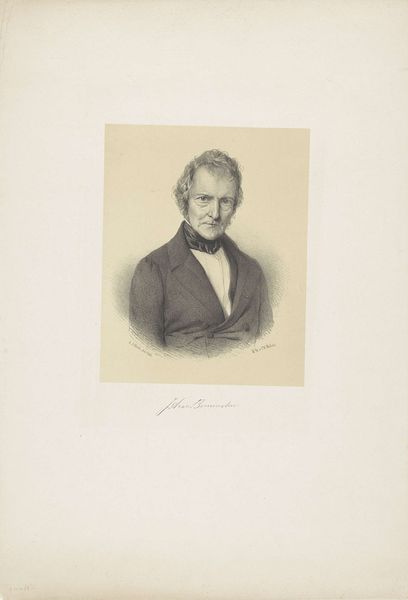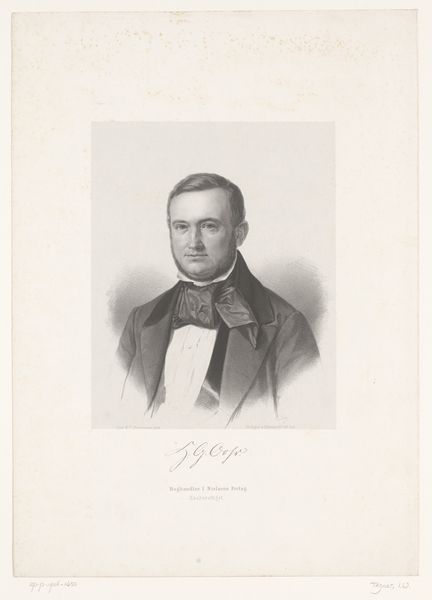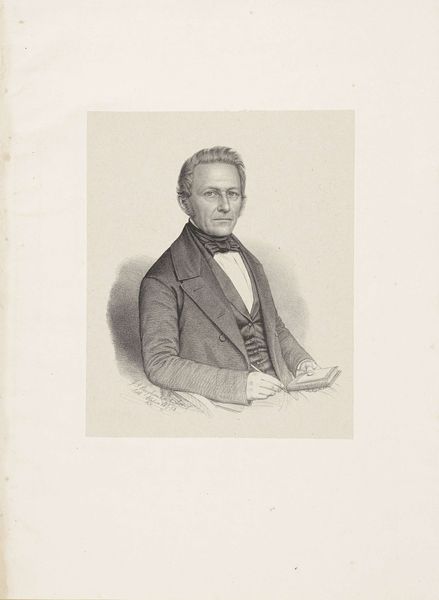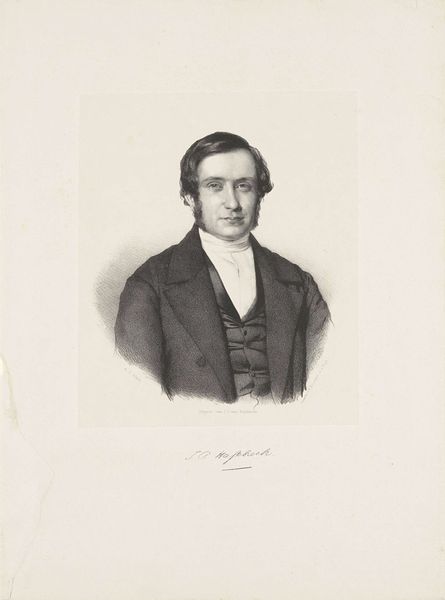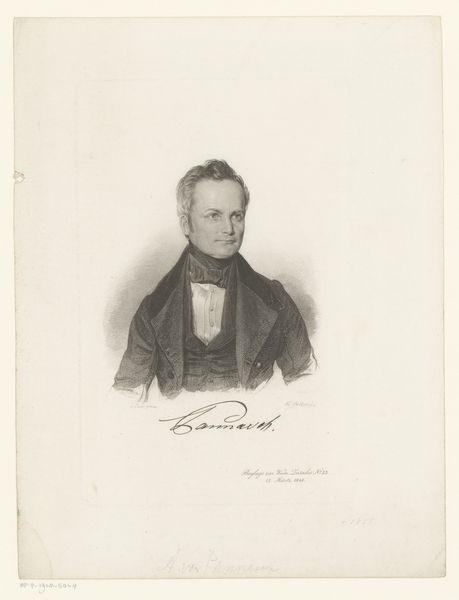
Dimensions: height 373 mm, width 273 mm
Copyright: Rijks Museum: Open Domain
Editor: This is "Portret van Jan Pieter Heije" by Adrianus Johannes Ehnle, created between 1847 and 1883. It's currently housed at the Rijksmuseum. It looks like it's primarily done with pencil and charcoal. I'm really struck by the artist's skill in capturing the texture of the subject's clothing, particularly his dark jacket and elaborate necktie. What are your initial impressions of this piece? Curator: Thank you. Let's focus on the interplay of line and tone, achieved through the sophisticated blending of pencil and charcoal. Notice how Ehnle utilizes hatching and cross-hatching to create subtle gradations of light and shadow, particularly evident in the rendering of the face. What effect does the contrast between these refined details and the smoother background have on your interpretation? Editor: I see how the textures of the coat and face really pop due to the shading, giving them a tactile presence, and how that differs from the smooth backdrop. The focus seems to be really pushed onto the figure in that way. But how important is the romanticist style to consider when understanding this piece? Curator: "Romanticism" speaks to a broader cultural tendency, yet within this drawing, we observe a rigorous formalism. It's through analyzing the oppositions—light and dark, sharp line and blurred shadow—that we access the core aesthetic strategies. It's not simply the man depicted, but *how* he is depicted that speaks most powerfully. Notice how the romantic artist seems to create his world with carefully laid marks; What meaning do you ascribe to that? Editor: I hadn't considered that before. Thinking about it, it seems that those artistic choices point to how portraiture can act like a stage where every detail is purposefully set to direct the viewer's eye and inform their impression. The composition really dictates our focus. Curator: Precisely. Through formal analysis, we see how the artist elevates the subject via skillful manipulation of materials and compositional techniques. Editor: It's been illuminating to see how the formal elements themselves convey so much meaning and artistic intent!
Comments
No comments
Be the first to comment and join the conversation on the ultimate creative platform.
